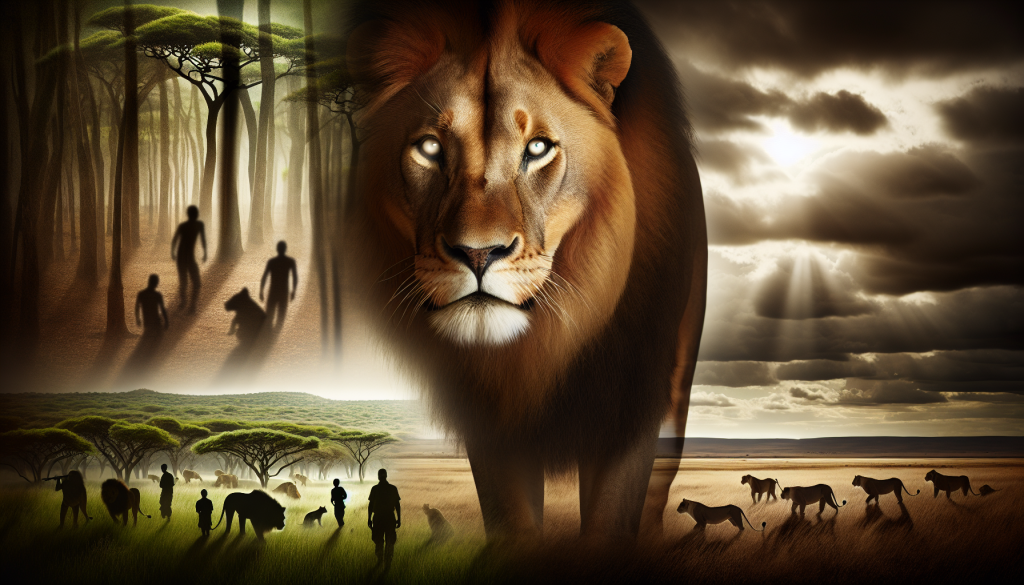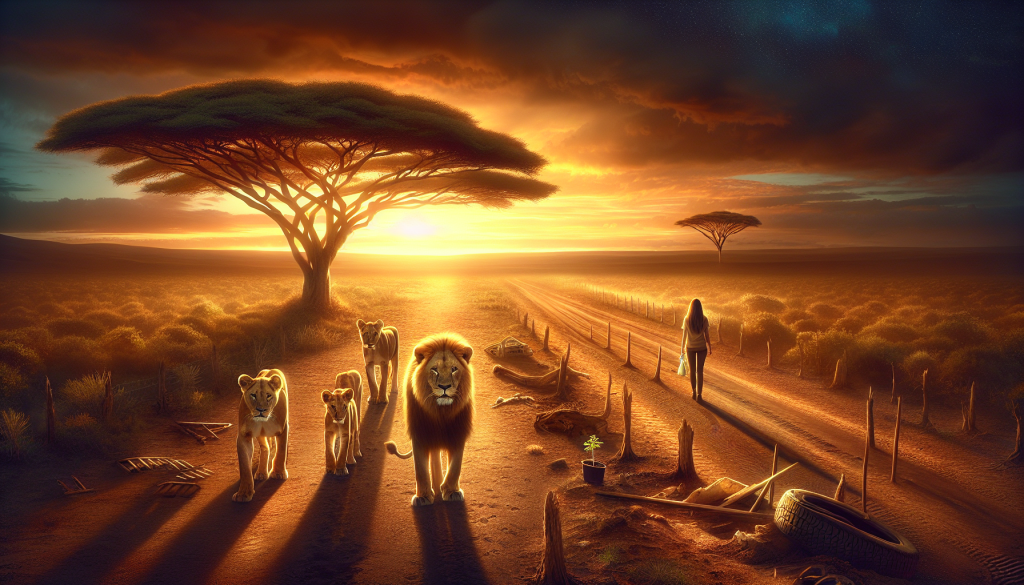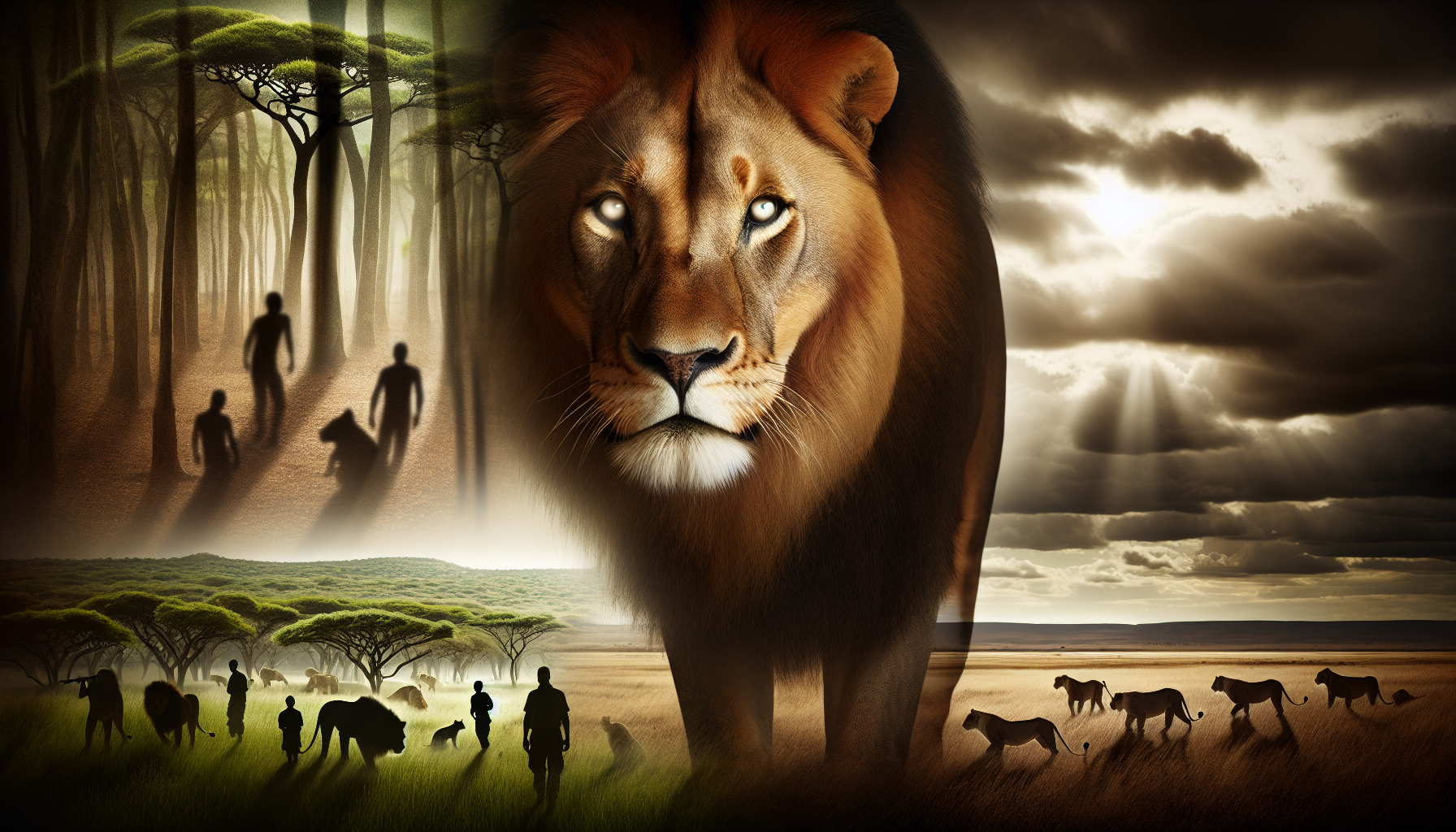Imagine a world without the majestic roar of the lion echoing across the African plains or the awe-inspiring sight of these regal creatures roaming freely in their natural habitat. Lions, the iconic symbol of strength and power, are facing a devastating decline in numbers, pushing them dangerously close to the brink of extinction. As we witness the rapid loss of these magnificent predators, it becomes crucial to explore the implications of their potential disappearance and the ripple effect it would have on the delicate balance of our ecosystem. In this article, we delve into the grim reality of lion conservation, shedding light on why their survival is vital, not just for the preservation of wildlife, but for our own existence as well.

Introduction
Lions are not just majestic creatures prowling the savannah; they are an integral part of our ecosystem and hold great cultural significance worldwide. However, their population has been rapidly declining due to various threats. In this article, we will explore the importance of lions, the factors contributing to their decline, the impact on our ecosystem, the economic contributions they provide, ongoing conservation efforts, the role of international organizations, and potential solutions to save these magnificent animals.
Importance of Lions
Symbol of National Pride
Lions have long been iconic symbols of strength and power, and they often serve as national animals. They hold deep cultural and historical meaning for many countries, representing courage, leadership, and loyalty. The lion’s image can be found on flags, coats of arms, and various emblems, reflecting their importance in national identity.
Ecosystem Balance
Lions play a vital role in maintaining the balance of ecosystems they inhabit. As apex predators, they regulate the population of herbivores, ensuring that certain species do not overgraze and deplete vegetation. This, in turn, helps maintain healthy habitats for other animals and promotes biodiversity.
Cultural Significance
Throughout history, lions have been depicted in art, literature, folklore, and religious beliefs, making them cultural icons. They are often revered as symbols of bravery, wisdom, and nobility. In indigenous cultures, traditional rituals and ceremonies frequently involve lions, celebrating their strength and significance in local communities.
Decline of Lion Population
Habitat Loss
One of the most pressing threats to lions is habitat loss. Rapid expansion of human settlements, agriculture, and infrastructural development encroach upon their natural habitats. As a result, lions are forced into smaller, fragmented areas, leading to increased competition for resources and a higher likelihood of human-wildlife conflict.
Human-Wildlife Conflict
As human populations expand into lion territories, conflicts between humans and lions escalate. Livestock depredation by lions and retaliatory killings by local communities create a challenging coexistence. The loss of livestock can significantly impact rural livelihoods, exacerbating tensions and resulting in retaliatory measures against lions.
Poaching
The illegal hunting of lions for their body parts, such as bones and skins, poses a severe threat to their survival. Poaching is driven by the demand for traditional medicine, ornamental products, and trophies. These illicit activities not only contribute to the decline of lion populations but also fuel organized crime and undermine conservation efforts.
Trophy Hunting
While controversial, trophy hunting remains an issue affecting lion populations. Some countries permit the hunting of lions under regulated programs, where hunters pay substantial fees for the opportunity to kill a lion legally. However, unsustainable trophy hunting practices and insufficient regulations can lead to overhunting and further harm lion population stability.
Impact on Ecosystem
Prey-Predator Relationship
Lions are apex predators at the top of the food chain and play a crucial role in regulating prey populations. By controlling herbivore numbers, lions prevent overgrazing, ensuring a healthy balance between predators and prey. Without lions, the unchecked growth of herbivores can lead to ecosystem imbalances, negatively impacting vegetation and other wildlife.
Biodiversity
The presence of lions promotes greater biodiversity within ecosystems. By regulating herbivore populations, lions indirectly influence the abundance and distribution of other species. This intricate balance ensures a diverse array of plant and animal life, enhancing the overall health and resilience of the ecosystem.
Habitat Degradation
As lions lose their natural habitats, it has a cascading effect on the environment. Habitat degradation, caused by human activities and climate change, disrupts the delicate balance required for lions and their prey to thrive. Deforestation, pollution, and land degradation further deteriorate the quality of ecosystems, making it more challenging for lions and other wildlife to survive.

Economic Contributions
Ecotourism
Lions are a significant draw for ecotourism, attracting wildlife enthusiasts from around the world. Tourists often visit countries with lion populations, eager to witness these extraordinary creatures in their natural habitats. This interest generates revenue for local communities, national parks, and conservation organizations, providing economic incentives to protect lions and their ecosystems.
Employment Opportunities
Protecting lion populations and their habitats creates employment opportunities for local communities. Eco-lodges, tour guides, park rangers, and conservationists are just a few of the roles that support lion conservation efforts. By investing in sustainable wildlife tourism, communities can ensure a stable livelihood while safeguarding these iconic predators.
Revenue Generation
The economic benefits derived from lions extend beyond tourism. Conservation organizations and governmental initiatives often receive financial support from international donors interested in preserving biodiversity and protecting endangered species. This funding contributes to research, anti-poaching efforts, and community-based conservation projects focused on lion populations.
Conservation Efforts
Protected Areas and Reserves
Creating and expanding protected areas and reserves is crucial for conserving lion populations. These areas provide sanctuaries where lions and their habitats can be safeguarded from human interference. Stricter regulations and increased patrolling help mitigate threats from poaching and habitat loss, allowing lion populations to recover and thrive.
Community-Based Conservation
Engaging local communities in lion conservation efforts is vital for sustainable and long-term success. Programs that empower communities to participate in wildlife conservation initiatives can help bridge the gap between humans and lions. By involving locals in decision-making processes and providing alternative livelihood opportunities, conservation efforts become more effective and meaningful.
Anti-Poaching Measures
Implementing robust anti-poaching measures is a critical component of lion conservation. Strengthening law enforcement, increasing penalties for poaching offenses, and improving surveillance technology can deter illegal hunting and minimize the impact of poaching on lion populations. Collaboration between governments, conservation organizations, and local communities is essential for combating this pervasive threat.
Education and Awareness
Raising awareness about the challenges faced by lions and the importance of their conservation is vital for garnering public support. Education programs, targeted campaigns, and community outreach initiatives help foster a sense of responsibility towards lion preservation. By educating the next generation and inspiring individuals to take action, we can cultivate a collective effort to protect and save these magnificent creatures.
Role of International Organizations
World Wildlife Fund (WWF)
The WWF plays a significant role in lion conservation by supporting initiatives on the ground and advocating for policy changes. They collaborate with governments, local communities, and other stakeholders to protect lion populations and their habitats. Through research, sustainable development projects, and advocacy, WWF contributes to the long-term survival of lions.
International Union for Conservation of Nature (IUCN)
As a leading authority on global conservation, the IUCN provides vital guidance and expertise in lion conservation efforts. They assess the conservation status of species, encourage collaborative action, and promote sustainable management of lion habitats. The IUCN’s Red List of Threatened Species serves as an important tool for monitoring the status and progress of lion populations.
Convention on International Trade in Endangered Species of Wild Fauna and Flora (CITES)
CITES is an international agreement aimed at ensuring the preservation of endangered species, including lions, through the regulation of international trade. By restricting the trade of lion products and promoting sustainable practices, CITES contributes to the conservation of lions and their habitats. It also aids in the prevention of illegal wildlife trafficking.
Potential Solutions
Strengthening Legislation
Enacting and enforcing stronger legislation is crucial for combating the threats faced by lions. Stricter regulations related to poaching, habitat destruction, and trophy hunting can help protect lion populations. Additionally, ensuring the prosecution of those involved in illegal activities and increasing penalties for offenses will act as a deterrent, effectively safeguarding lions and deterring wildlife crime.
Habitat Restoration
Efforts to restore and protect lion habitats are essential. Investing in reforestation programs, promoting sustainable land use, and mitigating the effects of climate change all contribute to the restoration of crucial lion territories. Collaboration between governments, NGOs, and local communities is vital in implementing effective habitat restoration initiatives.
Encouraging Sustainable Tourism
Promoting responsible and sustainable wildlife tourism practices can benefit both local communities and lion populations. Fostering partnerships between tourism operators, conservation organizations, and community representatives can ensure that tourism activities are conducted in an environmentally sustainable and socially responsible manner. This approach helps generate revenue for conservation efforts while minimizing negative impacts on lions and their habitats.
Engaging Local Communities
Involving local communities as active stakeholders in lion conservation is key to its success. Education and awareness programs should target these communities, emphasizing the ecological importance of lions and providing alternative livelihood opportunities to reduce reliance on practices that harm lions. Empowering communities through capacity-building and involving them in decision-making processes fosters a sense of ownership and encourages their participation in lion conservation efforts.
Conclusion
The declining lion population represents a significant loss for our world. Lions hold immense cultural, ecological, and economic value, and their conservation is crucial for the well-being of our planet. By addressing the drivers of their decline, implementing conservation initiatives, strengthening legislation, and promoting sustainable practices, we can ensure the continued existence of lions and preserve the delicate balance of our ecosystems. Ultimately, it is our collective responsibility to protect these magnificent creatures and ensure that future generations can witness the beauty and significance of lions in our world.

